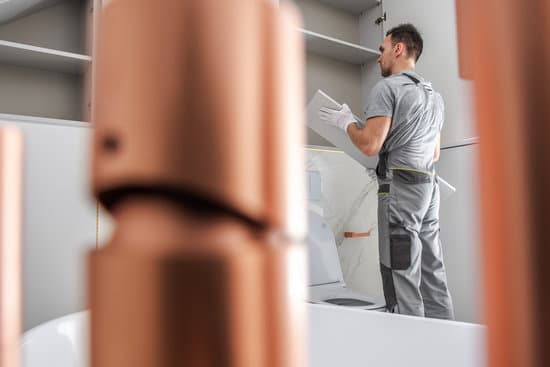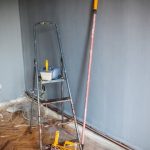Have you ever wondered, “Can you claim home improvements on taxes?” Homeowners often seek ways to offset costs and reap financial benefits from their property investments. One way to potentially save money is by claiming home improvements on taxes.
Understanding what qualifies as a home improvement for tax purposes and how it can benefit you financially is crucial for homeowners. In this article, we will delve into the concept of claiming home improvements on taxes and provide valuable insights on how to navigate this process.
Home improvements encompass a wide range of renovations and upgrades that enhance the value, efficiency, or functionality of a property. These can include anything from remodeling a kitchen or bathroom to installing energy-efficient appliances or making structural repairs. The big question for many homeowners is whether these expenses can be claimed on their taxes as a deduction or credit.
Knowing the difference between a tax deduction and a tax credit is essential when it comes to claiming home improvements on taxes. While both can reduce your tax liability, they work in different ways and have varying eligibility requirements. Understanding how each option applies to home improvement expenses will help homeowners maximize their potential tax benefits.
In the following sections, we will explore what qualifies as a home improvement for tax purposes, eligible expenses that can be claimed, and any limitations or disqualifications that may apply. We will also provide guidance on documentation and record-keeping to ensure that homeowners are well-prepared to claim home improvements on taxes. Let’s dive into the details and learn how you could potentially benefit from your home improvement projects come tax time.
What Are Home Improvements
When it comes to claiming home improvements on taxes, it’s important to understand what qualifies as a home improvement for tax purposes. The Internal Revenue Service (IRS) defines a home improvement as any project that adds value to your home, prolongs its useful life, or adapts it to new uses. Here are some examples of home improvements that can be claimed on taxes:
- Adding a new room or expanding an existing one
- Renovating the kitchen or bathroom
- Installing a new heating or air conditioning system
- Upgrading the electrical wiring or plumbing
- Adding a security system or storm windows
It’s important to note that regular maintenance and repairs, such as painting the exterior of your home or fixing minor leaks, do not qualify as home improvements for tax purposes. These expenses are considered part of the cost of owning and maintaining your home and cannot be claimed on taxes. When in doubt, it’s always best to consult with a tax professional to determine if a particular expense qualifies as a home improvement for tax purposes.
Understanding Tax Deductions
When it comes to claiming home improvements on taxes, it’s important to understand the difference between a tax deduction and a tax credit. Both can help reduce your tax liability, but they work in different ways.
Tax Deduction
A tax deduction reduces the amount of your income that is subject to taxation. This means that if you have $10,000 in income and claim a $2,000 tax deduction, you will only be taxed on $8,000 of income. Home improvement expenses that qualify for tax deductions can help lower your taxable income, ultimately reducing the amount of taxes you owe.
Tax Credit
On the other hand, a tax credit directly reduces the amount of taxes you owe. If you owe $5,000 in taxes and are eligible for a $1,000 tax credit, your tax bill will be reduced to $4,000. This makes tax credits particularly valuable because they provide a dollar-for-dollar reduction in your tax liability. Certain home improvements may qualify for energy-efficient tax credits, which can result in significant savings on your taxes.
Understanding the difference between these two concepts is crucial when considering the financial benefits of claiming home improvements on taxes. It’s also important to consult with a tax professional or accountant to ensure that you are maximizing your potential savings while staying compliant with all relevant regulations and requirements.
Eligible Home Improvement Expenses
When it comes to claiming home improvement expenses on taxes, not all costs incurred are eligible for a tax deduction or credit. It’s important to understand which expenses qualify in order to maximize potential savings. Generally, only improvements that increase the value of your home, adapt it to new uses, or extend its life can be claimed.
Qualifying home improvement expenses typically include costs for renovations, additions, installations of new systems (such as heating, air conditioning, or plumbing), and landscaping. It’s important to note that routine repairs and maintenance do not usually qualify as home improvements for tax purposes. Examples of non-qualifying expenses are painting a room, fixing a leaky faucet, or repairing a broken window.
The key is to keep detailed records of all home improvement expenses and consult with a tax professional to ensure compliance with tax laws and regulations. By accurately documenting these expenses, homeowners can potentially lower their tax liability and receive the maximum benefit from their eligible home improvement costs.
| Expense Type | Qualification for Tax Claim |
|---|---|
| Renovations and additions | Eligible |
| New system installations (heating, air conditioning, plumbing) | Eligible |
| Landscaping | Eligible |
Home Office Expenses
If you use a portion of your home for business purposes, you may be eligible to claim home office expenses on your taxes. The Internal Revenue Service (IRS) allows self-employed individuals and employees who work from home to deduct expenses related to their home office, as long as the space is used regularly and exclusively for business purposes. This can include expenses related to the maintenance, repairs, and improvements of the home office.
Home office improvements that may be eligible for tax deductions can include renovations or upgrades to the workspace that directly benefit the business. For example, if you upgrade the lighting or install built-in shelves in your home office, these expenses may qualify for tax deductions. However, it’s important to note that any improvement claimed must be solely for the business area of your home and not for personal use.
When claiming home office expenses for tax deductions, it’s crucial to keep detailed records and documentation of all expenses related to the improvement. This can include receipts, invoices, and any other relevant paperwork that proves the cost and purpose of the improvement. Additionally, it’s recommended to consult with a tax professional or accountant to ensure that you are accurately claiming all eligible expenses and complying with IRS regulations.
Energy Efficiency Upgrades
Energy-efficient home improvements can be a great way to not only save money on energy bills but also to potentially qualify for tax credits. These upgrades are designed to reduce the amount of energy needed in a home, resulting in lower utility costs and a smaller carbon footprint. When it comes to tax benefits, the government often rewards homeowners who make these environmentally friendly improvements.
Here are some examples of energy-efficient home improvements that may qualify for tax credits:
- Installing solar panels
- Upgrading to energy-efficient windows and doors
- Adding insulation to walls, floors, or attics
- Upgrading heating, ventilation, and air conditioning (HVAC) systems
In order to claim tax credits for these types of home improvements, it’s important to keep detailed records of the expenses incurred. This includes receipts for materials and labor, as well as any documentation related to the energy efficiency ratings of the products used. By maintaining accurate records, homeowners can substantiate their claims if they are ever audited by the Internal Revenue Service (IRS).
It’s also worth noting that when claiming tax credits for energy-efficient home improvements, there may be certain limitations or disqualifications based on factors such as income level or the type of property. Homeowners should carefully review IRS guidelines or consult with a tax professional to ensure they meet all requirements before claiming these credits on their taxes.
Documentation and Record-Keeping
When it comes to claiming home improvements on taxes, keeping accurate documentation and records is crucial. The IRS requires detailed records to support any claims made for home improvement expenses. This not only helps in case of an audit, but also ensures that you can take full advantage of any tax benefits available to you.
Types of Documentation
Receipts, invoices, contracts, and other relevant documents should be saved for all home improvement expenses. This includes materials purchased, labor costs, and any permits obtained for the work. These documents will serve as evidence of the expenses incurred and are necessary for claiming the deductions or credits on your taxes.
In addition to financial paperwork, it is also important to keep a record of the before-and-after condition of your property. Photographs can provide visual evidence of the home improvements made, clearly showing the changes that were implemented. This can help support your claim and demonstrate that the work qualifies as a legitimate home improvement for tax purposes.
Record-Keeping Tips
To ensure that you have all necessary documentation at tax time, it’s best to develop a system for organizing and storing these records. Create a file specifically for home improvement expenses and make sure to save all relevant paperwork in one place. Consider using digital storage options to safeguard against loss or damage of physical documents. It’s also helpful to maintain a log or spreadsheet detailing each expense incurred, including dates, descriptions, and amounts spent.
By maintaining thorough and organized records of your home improvement expenses, you can streamline the process of claiming deductions or credits on your taxes. This not only simplifies the filing process but also provides peace of mind knowing that you have proper documentation to support your claims.
Limitations and Disqualifications
When it comes to claiming home improvements on taxes, there are certain limitations and disqualifications that homeowners need to be aware of. It’s important to understand that not all home improvements will qualify for tax claims, and there are specific conditions that must be met in order to be eligible for deductions or credits.
One limitation to keep in mind is the necessity of the home improvement. In order for an expense to qualify for a tax claim, it must be considered necessary for the maintenance, repair, or improvement of the property. Cosmetic upgrades or renovations that do not contribute to the overall functionality or energy efficiency of the home may not be eligible for tax deductions.
Additionally, any expenses incurred for improving a rental property rather than a primary residence may not qualify for tax claims. The Internal Revenue Service (IRS) has specific guidelines regarding what can be claimed for rental properties, so it’s important to consult with a tax professional or refer directly to IRS publications when considering deductions or credits related to rental property improvements.
It’s also important to note that any expenses reimbursed by insurance or other sources are generally not eligible for tax claims. If a homeowner receives compensation from insurance coverage for a home improvement expense, they typically cannot also claim that expense as a deduction or credit on their taxes. Keeping accurate records and documentation of all expenses is crucial in determining whether certain home improvements meet the requirements for tax claims.
Conclusion
In conclusion, claiming home improvements on taxes can be a beneficial way to save money and maximize your investment in your property. By understanding what qualifies as a home improvement for tax purposes and the difference between tax deductions and tax credits, you can ensure that you are taking full advantage of potential savings.
It is important to keep accurate records and documentation of your home improvement expenses to support your claims and to be aware of any limitations or disqualifications that may apply.
To start the process of claiming home improvements on taxes, begin by reviewing the eligible home improvement expenses that can be claimed. This may include renovations, repairs, additions, or energy-efficient upgrades. Home office expenses may also qualify for tax deductions if you use a portion of your home regularly and exclusively for business purposes. When keeping records, make sure to retain invoices, receipts, contracts, and any other relevant documents to substantiate your claims.
It is advisable to consult with a tax professional or accountant who can provide guidance specific to your situation. They can help you navigate the complexities of claiming home improvements on taxes and ensure that you are maximizing your potential savings while remaining in compliance with tax laws. By taking these steps and staying informed about tax regulations related to home improvements, you can make the most of this opportunity for financial benefits.
Frequently Asked Questions
Can Home Improvements Be Written Off on Taxes?
Home improvements can generally not be written off on taxes, as they are considered personal expenses. However, there are some exceptions for home improvements that are medically necessary or energy efficient, which may qualify for tax deductions or credits.
Can You Write Off New Flooring on Your Taxes?
The cost of new flooring typically cannot be written off on your taxes if it is being installed in a personal residence. However, if the flooring is being installed for business purposes or is part of a rental property, it may be eligible for tax deductions.
Can I Claim Kitchen Remodel on My Taxes?
In most cases, kitchen remodel expenses cannot be directly claimed on your taxes. Similar to home improvements, these costs are usually considered personal expenses rather than deductible items. However, as mentioned earlier, certain aspects of a kitchen remodel, such as energy-efficient appliances, may qualify for tax credits under specific circumstances.

I’m thrilled to have you here as a part of the Remodeling Top community. This is where my journey as an architect and remodeling enthusiast intersects with your passion for transforming houses into dream homes.





